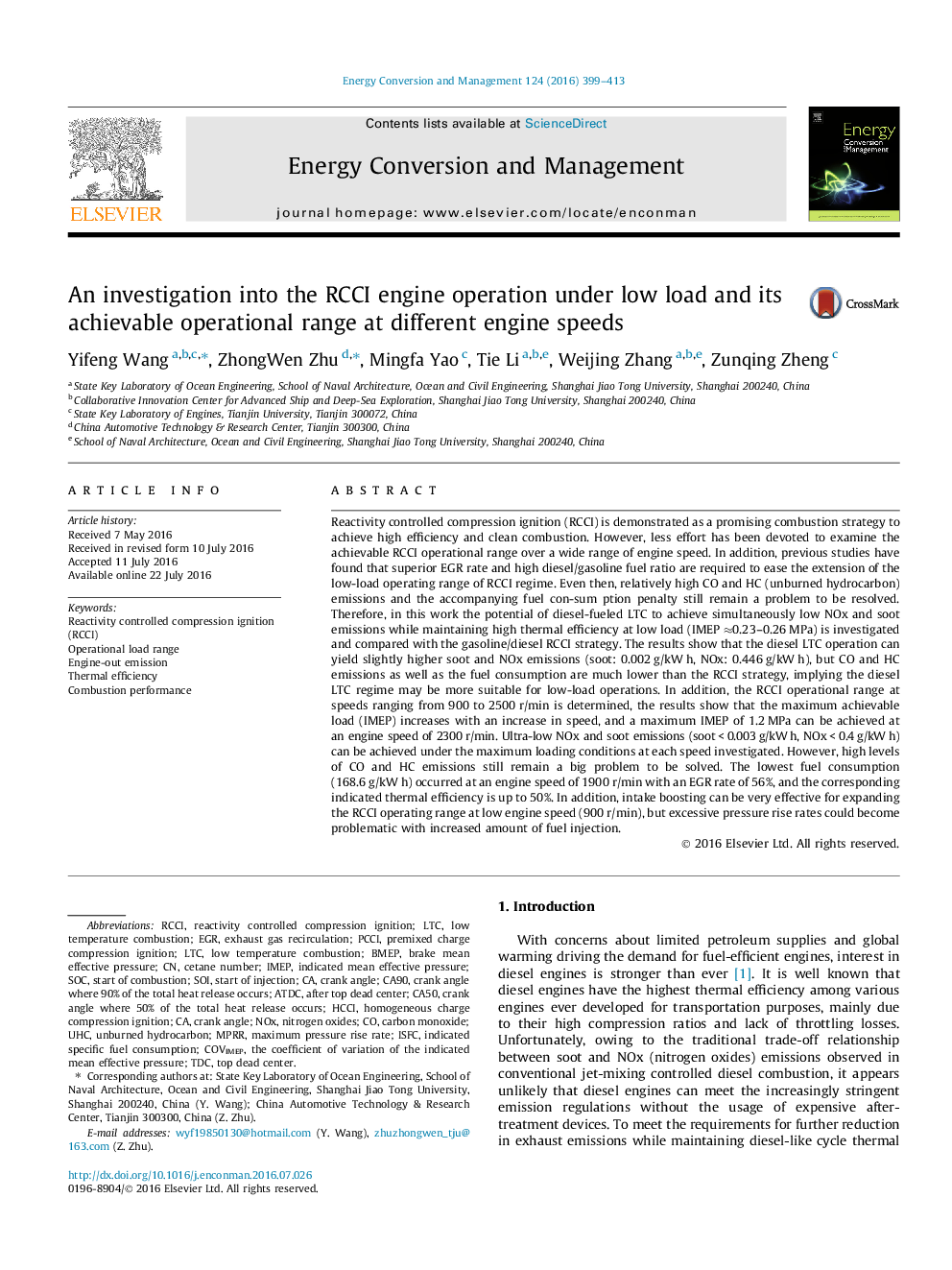| کد مقاله | کد نشریه | سال انتشار | مقاله انگلیسی | نسخه تمام متن |
|---|---|---|---|---|
| 764999 | 1462838 | 2016 | 15 صفحه PDF | دانلود رایگان |

• The response of allowable RCCI operating range to engine speed variation is studied.
• The RCCI and diesel LTC engine operations at are compared at low engine load.
• The potential of expanding RCCI operating range at low engine speed is explored.
Reactivity controlled compression ignition (RCCI) is demonstrated as a promising combustion strategy to achieve high efficiency and clean combustion. However, less effort has been devoted to examine the achievable RCCI operational range over a wide range of engine speed. In addition, previous studies have found that superior EGR rate and high diesel/gasoline fuel ratio are required to ease the extension of the low-load operating range of RCCI regime. Even then, relatively high CO and HC (unburned hydrocarbon) emissions and the accompanying fuel con-sum ption penalty still remain a problem to be resolved. Therefore, in this work the potential of diesel-fueled LTC to achieve simultaneously low NOx and soot emissions while maintaining high thermal efficiency at low load (IMEP ≈0.23–0.26 MPa) is investigated and compared with the gasoline/diesel RCCI strategy. The results show that the diesel LTC operation can yield slightly higher soot and NOx emissions (soot: 0.002 g/kW h, NOx: 0.446 g/kW h), but CO and HC emissions as well as the fuel consumption are much lower than the RCCI strategy, implying the diesel LTC regime may be more suitable for low-load operations. In addition, the RCCI operational range at speeds ranging from 900 to 2500 r/min is determined, the results show that the maximum achievable load (IMEP) increases with an increase in speed, and a maximum IMEP of 1.2 MPa can be achieved at an engine speed of 2300 r/min. Ultra-low NOx and soot emissions (soot < 0.003 g/kW h, NOx < 0.4 g/kW h) can be achieved under the maximum loading conditions at each speed investigated. However, high levels of CO and HC emissions still remain a big problem to be solved. The lowest fuel consumption (168.6 g/kW h) occurred at an engine speed of 1900 r/min with an EGR rate of 56%, and the corresponding indicated thermal efficiency is up to 50%. In addition, intake boosting can be very effective for expanding the RCCI operating range at low engine speed (900 r/min), but excessive pressure rise rates could become problematic with increased amount of fuel injection.
Journal: Energy Conversion and Management - Volume 124, 15 September 2016, Pages 399–413